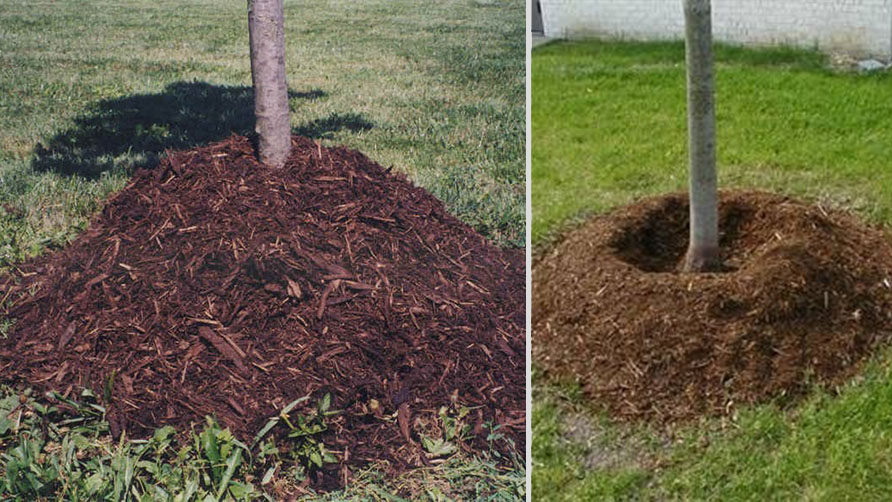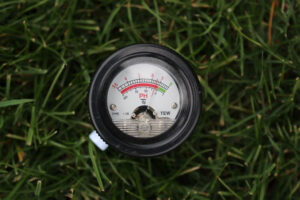Table of Contents
ToggleLast Updated on November 15, 2024
Landscape plants are a great investment to a property and often easily maintained, but sometimes our plants suddenly stop thriving or die off. Why is that? There are many factors that can cause a decline in plants, whether it’s from disease, insects, a problem in the roots, something internal, structurally or the plant can just be in the wrong location. That’s why it is vital to pick the healthiest plants from a reputable nursery to start with and to know the attributes of the plants you want in your landscape. This is particularly important because landscapes are often planted for aesthetics and not with the overall health of the plant in mind.
Determining Soil Type
First, to match your plant material to the planting site you must determine the soil type. Most of the soil in New Jersey is clay and shale based. This type of soil may be good for some plants and not for others because it is often compacted. Compacted soil can lead to water not reaching the roots of the plants and can cause a drainage issue. It is best to survey the site beforehand and know where the water sits and drains. This is particularly important because some plants like moist soil and some do not. For example, White Pines do not like wet soil, they decline very rapidly in wet waterlogged areas. You wouldn’t want to plant White Pines in a detention basin because of how wet it stays all the time. Organic-rich soil may be added to the planting areas to improve the drainage and soil conditions. You may need a professional to help with site drainage before moving on.
A soil test from a laboratory is also beneficial as it informs you about the nutrients that are either lacking or in abundance in your soil. It also informs you what the pH of the soil is. Certain plants thrive in more acidic soil, while other plants like more alkaline soil. Knowing the pH helps you select the right plants for your soil type. You wouldn’t want to pick two different plants that like different soil pH’s and plant them next to each other, one would do very well and the other might suffer.
Designating enough space
Another factor when planting landscape plants to address is how much root space and overall space in general there is at the site. If this landscape is next to a house or building, you shouldn’t pick a tree that grows too large or wide for the area you have available. For example, someone plants a blue spruce next to the front corner of their house. It was small and looked great when it was planted but, fast forward 15 to 20 years later and that same tree is now taller than the house and growing into the siding. Not only did it outlive the space, but the roots can also cause damage to sidewalks, driveways, utilities above or below ground and even the foundation of a house. Think about the trees in New York City planted in soil in the middle of a sidewalk; with no space for the roots to grow, eventually the trees die off. Too often we see on the news after a particularly bad thunderstorm, a tree or tree branch that has fallen onto a house or car. It’s best to pick plants that have space to grow but not get too large as they often can overtake the entire space and/or be a danger to life and property.
Sunlight vs. Shade
Next, we recommend determining the amount of sunlight each area of your landscape receives. Based on shade and sunlight availability, picking a suitable plant for that area is highly encouraged. Check the tags of the plants when purchasing them to determine the amount of sunlight each species of plant requires. The tags on the plants contain vital information relating to best watering practices and how much sunlight the plant requires. Some plants require partial shade, or full sun all day. Different problems can arise in a plant being in too much sunlight if it requires more shade or vice versa. A plant such as an azalea can have more lacebug problems in full sun than in partial shade. That’s not to say that the azalea in partial shade never has a lacebug problem, but it being in the proper place helps reduce the issue if the plant is in the right location.
Spring and fall are the traditional times for planting, but modern methods and tools have made it so that you can plant all year long if the soil has not yet frozen. The plants you or your landscaper pick should be installed at a time of year that is ideal for that plant and other environmental stresses are low. The point being, picking the best time of year for the specific plants, with limited stress, is the best option for your new plants.
Mulching
Almost all landscapes contain either mulch or stones/rocks. Mulch is very beneficial to the landscape, as the mulch decomposes it adds vital nutrients back into the soil. The plants use those nutrients for growth. It is best to use only 1- 3 inches of mulch and keep the root flares of the plants exposed. Trees produce oxygen from the roots, if the mulch is piled too high it basically suffocates the tree or shrub. It can also trap moisture against the bark, causing it to rot. This causes damage and decline of the tree or shrub over time. Mulch also helps reduce weed growth throughout the season. For more information on proper mulching techniques, click here for our mulching blog.

Conclusion
There are many factors that go into choosing and planting a landscape for a homeowner. Whether you plan on doing it yourself, or you hire a landscaper, consider the various factors that can greatly impact the health of your new landscape. Soil type, sunlight, watering practices, root space all greatly affect the livelihood of a plant. If you are in our service area and are planning on installing new landscape plants and have questions, please give our office a call at 908-281-7888.


